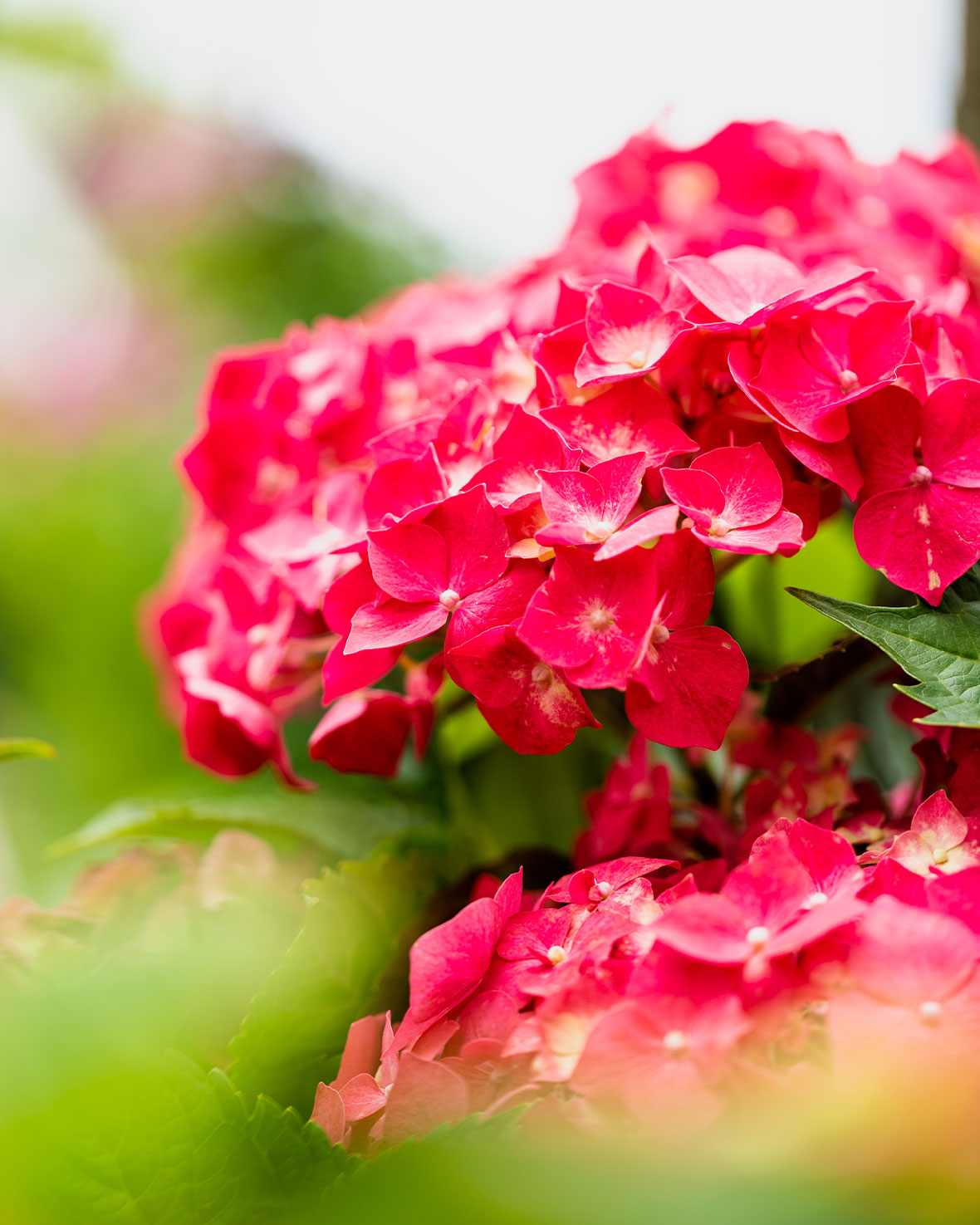Late spring is hydrangea time. With their lovely neat mounds of lush green leaves, topped by clusters of little buds that grow plumper by the day, they are a highlight in semi-shaded situations from now through to the end of summer. In full bloom, the large, striking flower heads in shades of blue, purple, pink, cerise and white are just gorgeous. The foliage too is lovely, with large, dark green oval leaves, often with serrated edges. The lushness of the foliage and the mostly cool tones of the flowers have a soothing effect in a summer garden.
There are over 70 species in the Hydrangea genus, including small trees and climbing varieties. But what we commonly call ‘Hydrangea’ is usually Hydrangea macrophylla, and there are over 600 cultivars of this species alone. These are sometimes known as “Moptops”, and they produce large heads of simple, flat four-petalled flowers. A slight variant on the “Moptop” is the “Lacecap”, which have the flat flowers around the outside of the head, surrounding a centre containing many tiny, intricate, lacy flowers.

Hydrangeas are an easy-care, fast-growing deciduous shrub to 1-3m. One of the very cool things about hydrangeas is that the flower colour can be somewhat variable according to soil conditions. Acidic soils will generally produce bluer flowers, whereas alkaline soils will produce pinker flowers. White varieties will tend to remain white, although they may be tinged with blue or pink as they age, depending on the soil.
You can influence the flower colour if you want, adding hydrangea pinking tonic or lime to push the flower colour towards the pink end of the spectrum, or hydrangea blueing tonic to go the other way. Bear in mind that, in a pot, this may lead to slightly weaker, floppier stems. If you want to keep a hydrangea blue in a pot, try using a potting mix for azaleas and camellias as this will be a little more acidic than regular premium potting mix.
Hydrangeas are long-lived and easy to grow. The ideal position is partly shaded, protected from strong winds and hot afternoon sun. Not too shady, though, or you will have beautiful leaves and few flowers. You’ll need moist, well-drained soil enriched with plenty of organic matter. Use water crystals when you plant, and keep the plants well mulched as they don’t like to dry out. They look spectacular in pots if you can keep them really well watered. Avoid wetting the foliage as this can encourage fungal disease which you can treat with organic Eco-Fungicide.
Prune after flowering, around March or April, and remove any old or dead wood. Don’t prune too hard, though, and leave stems that haven’t flowered as they may do so next year. You can pick the flowers for the vase, and they can even be dried.
Picking hydrangeas is a morning task, ideally the morning after the plants have received a good deep watering. Choose mature heads on which all the flowers are fully open. If you pick very fresh blooms, which haven’t completely opened, they will wilt pretty well straight away.
If you want to dry the blooms, remove the leaves and pop the freshly-cut stems in a vase containing about 2cm of water. Place the vase out of direct sunlight and, within 2-3 weeks, your hydrangeas will be dried. The colour will not be as intense as it was on the plant; it will be a subtle, more muted shade of its former self. If you leave the flowers on the plant to dry, they tend to turn brown.